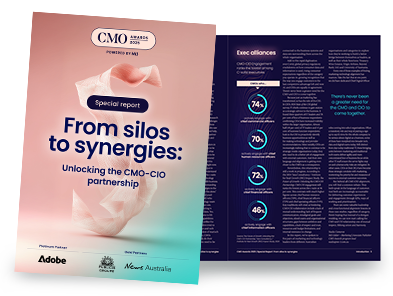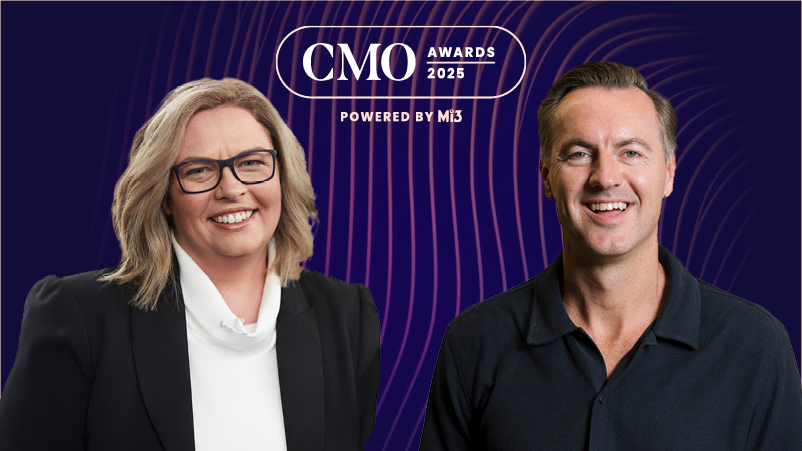In FY24, ANZ marketers won brand investment back. In FY25, the team introduced a portfolio-wide, business-case-driven funding model, investing a double-digit percentage of the marketing budget into growth initiatives. By FY26, marketing will fully transition to zero-based budgeting. Reshaping marketing funding has become a defining step for ANZ GM of marketing, Sian Chadwick, in her first couple of years at the big four bank.
“It’s required marketing to align all internal stakeholders around common objectives,” she says.
No mean feat, but necessary if you’re going to rewrite the marketing playbook to ensure a commercially-driven and customer-focused marketing function. Such work requires Chadwick to put data and insight first, answering ‘who’, ‘what’ and ‘why’ in a way the rest of the business can comprehend.
“Marketing at ANZ had to move beyond rigid product-based structures and disaggregated reactive campaigns. Customers don’t wait, and neither could we. We needed a function as sharp as the data it used and as integrated as the whole-of-customer insights it generated,” she says.
At the core of this new playbook is what Chadwick calls ‘Strategy, Insights, and Growth’. “It’s not just another function, but a strategic hub designed to identify demand drivers, identify commercial value pools, and embed marketing into decision-making. We’re transforming, using democratised analytics and deep customer understanding to develop long-term differentiation strategies,” she explains.
Previously, budgets were distributed to product and customer experience teams with minimal ‘whole of customer’ oversight. Which is why the portfolio-wide business-case-driven funding model in this current financial year investing a double-digit percentage of the marketing budget into growth initiatives is such a significant change internally. Transition to zero-based budgeting will ensure every dollar invested drives measurable portfolio value, continues Chadwick.
“Given the scale of change, we’re bringing stakeholders on this journey, ensuring upfront alignment on a balanced set of principles that drive efficiency,” she says. “We’ve developed an overarching brand strategy for Australia, unifying our brand propositions and messaging in market across our business divisions and complex customer set. Moving forward, we will speak with one voice, owning our purpose and delivering growth.”
None of this works in isolation. “Marketing is becoming a connective tissue across ANZ, integrating with product, sales, and customer experience teams to create a unified, strategic growth function,” says Chadwick.
All this ensures ANZ marketing is no longer reactive but predictive, “not refining how we work, but redefining what marketing means within a large matrixed enterprise”.
Effective marketing strategy
A key change required was the recalibration back to brand. By May 2023, ANZ’s brand budget had been substantially reduced due to economic caution and budgetary pressures.
“While this addressed short-term cost concerns, I recognised the long-term risk of underinvesting in brand equity. Brand is not a discretionary expense, it is a business asset driving both immediate revenue and sustained growth,” comments Chadwick.
To build the case for investment, the marketing team leveraged Commercial Mix Modelling (CMM), built in partnership with Analytics Partners, alongside brand and reputation metrics, using data to demonstrate the direct impact of brand spend on business performance. For Chadwick, CMM is decision-making tool that is able to compare business growth levers, rather than just marketing. The numbers were run, the sceptics won over and brand investment not only improved in FY24, but increased further in FY25.
“This was no ordinary budget win. It was a renaissance,” says Chadwick. Off the back of the decision, ANZ reshaped its agency village, introducing Leo Burnett Australia and Untangld alongside PHD and Thrive PR for enhanced strategic and creative firepower.
Sharpening the customer-first brand vision, leveraging insights to unearth untapped opportunities and shaking up campaigns to encourage deeper and more meaningful connections gave ANZ a 1.6ppt year-on-year increase in brand reputation and 2ppt increase in brand consideration.
Operationally, it’s also extended media buying cycles from six to 12 weeks, which Chadwick believes allows for greater precision, smarter spend and stronger returns.
“We partner closely with finance and have ensured data-driven budget allocation and measurement. Integrating data teams within marketing further improved targeting and campaign effectiveness,” she says. “CMM became a core decision-making tool, allowing us to optimise business growth levers with precision. The impact: A 25 per cent improvement in marketing ROI year-over-year, delivering through media efficiency.”
But it wasn’t just about percentages for Chadwick. “By gaining brand investment, ANZ didn’t just reclaim its place at the table – it rebuilt the table entirely, rebuilding brand equity, enhancing customer engagement, and reinforcing marketing as a key driver of business success.”
Discerning decision making
Meanwhile, Chadwick’s decision to bring creative production in-house has been a power saving, rather than pure cost-saving move. “Outsourcing has become expensive, slow and creatively inconsistent. The answer? ANZ’s own creative production studio called Blue Sky,” she says.
The short-term gain was clear: A 50 per cent reduction in production costs, freeing up budget for strategic brand investment. But Chadwick also cites greater control, agility, and future-proofing ANZ’s creative capabilities as long-term wins.
To gain further productivity, ANZ is rolling out Adobe Workfront, streamlining workflows, automating processes, and improving workforce planning. The studio is becoming a testing ground for audiovisual production capabilities and AI-driven creative production too including building Brand assets (Adobe Express), Brand illustrations (Adobe Firefly) and production rollout (Adobe GenStudio).
“We are setting up and building out consistent asset libraries at pace, enabling iterations for AB testing and significantly speeding up the route to market for intricate, high-quality executions,” says Chadwick. “Looking ahead, this shift strengthens ANZ’s ability to compete in a digital-first world. The result? Faster, more cost-effective, and higher-quality creative output – a decision that has transformed not just production, but the entire way ANZ approaches marketing execution.”




































